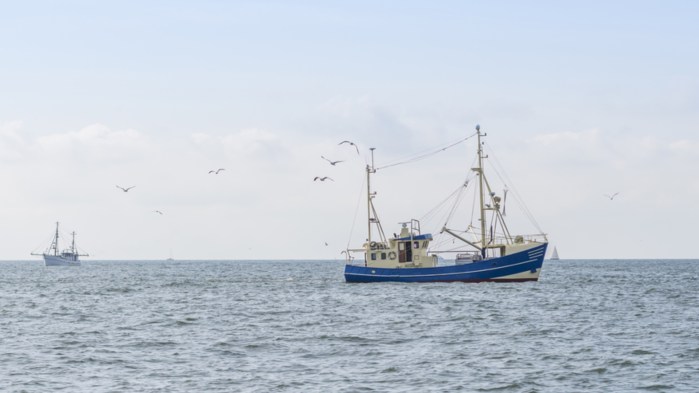Global Frozen Fish Market – China Holds 17 Percent of World Exports, with $7.6B in 2018
IndexBox has just published a new report: ‘World – Frozen Fish – Market Analysis, Forecast, Size, Trends and Insights’. Here is a summary of the report’s key findings.
The global frozen fish market revenue amounted to $118.3B in 2018, rising by 6.6% against the previous year. The market value increased at an average annual rate of +2.1% over the period from 2014 to 2018.
Driven by increasing demand for frozen fish worldwide, the market is expected to continue an upward consumption trend over the next decade. Market performance is forecast to decelerate, expanding with an anticipated CAGR of +0.8% for the period from 2018 to 2030, which is projected to bring the market volume to 43M tonnes by the end of 2030.
Frozen Fish Trade 2014-2018
In 2018, the global exports of frozen fish amounted to 17M tonnes, increasing by 6.5% against the previous year. The total export volume increased at an average annual rate of +2.8% from 2014 to 2018; the trend pattern remained relatively stable, with somewhat noticeable fluctuations being recorded throughout the analyzed period. The pace of growth was the most pronounced in 2017 with an increase of 7.1% year-to-year. Over the period under review, global frozen fish exports reached their maximum in 2018 and are likely to continue its growth in the near future.
In value terms, frozen fish exports stood at $43.9B (IndexBox estimates) in 2018.
Exports by Country
The exports of the twelve major exporters of frozen fish, namely China, Russia, the U.S., Viet Nam, Norway, the Netherlands, Chile, Taiwan, Chinese, Japan, Spain, Namibia and India, represented more than half of total export.
From 2014 to 2018, the most notable rate of growth in terms of exports, amongst the main exporting countries, was attained by India, while exports for the other global leaders experienced more modest paces of growth.
In value terms, China ($7.6B) remains the largest frozen fish supplier worldwide, comprising 17% of global exports. The second position in the ranking was occupied by the U.S. ($3.6B), with a 8.2% share of global exports. It was followed by Russia, with a 6.7% share.
Export Prices by Country
In 2018, the average frozen fish export price amounted to $2,574 per tonne, increasing by 2.9% against the previous year. Over the period under review, the frozen fish export price, however, continues to indicate a relatively flat trend pattern. The most prominent rate of growth was recorded in 2018 when the average export price increased by 2.9% y-o-y. Over the period under review, the average export prices for frozen fish attained their maximum at $2,628 per tonne in 2014; afterwards, it flattened through to 2018.
Prices varied noticeably by the country of origin; the country with the highest price was Chile ($5,059 per tonne), while Namibia ($1,334 per tonne) was amongst the lowest.
From 2014 to 2018, the most notable rate of growth in terms of prices was attained by India, while the other global leaders experienced more modest paces of growth.
Imports by Country
In 2018, China (2.2M tonnes), followed by Thailand (1.4M tonnes), Japan (1.4M tonnes), the U.S. (1M tonnes) and South Korea (0.9M tonnes) were the largest importers of frozen fish, together making up 40% of total imports. The following importers – Viet Nam (706K tonnes), Nigeria (581K tonnes), Spain (515K tonnes), the Netherlands (470K tonnes), Germany (436K tonnes), Cameroon (404K tonnes) and Russia (371K tonnes) – together made up 20% of total imports.
From 2014 to 2018, the most notable rate of growth in terms of imports, amongst the main importing countries, was attained by Viet Nam, while imports for the other global leaders experienced more modest paces of growth.
In value terms, the largest frozen fish importing markets worldwide were Japan ($6B), the U.S. ($5B) and China ($4B), together comprising 34% of global imports. Thailand, South Korea, Viet Nam, Germany, Spain, the Netherlands, Russia, Nigeria and Cameroon lagged somewhat behind, together accounting for a further 29%.
Import Prices by Country
The average frozen fish import price stood at $2,582 per tonne in 2018, picking up by 2.2% against the previous year.
There were significant differences in the average prices amongst the major importing countries. In 2018, the country with the highest price was the U.S. ($5,112 per tonne), while Nigeria ($839 per tonne) was amongst the lowest.
From 2014 to 2018, the most notable rate of growth in terms of prices was attained by Russia, while the other global leaders experienced more modest paces of growth.
Source: IndexBox AI Platform





Leave a Reply